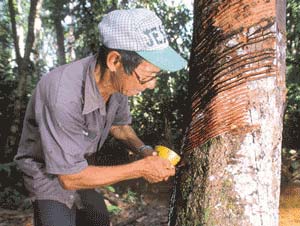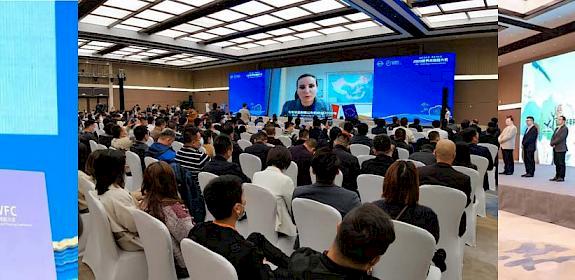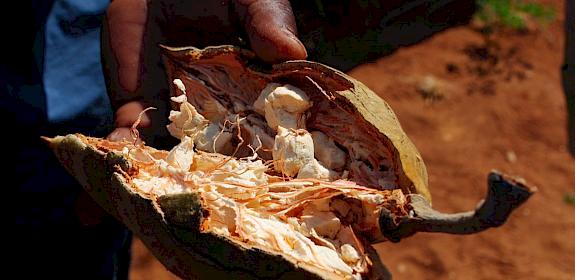Can trade promote sustainable use of forest products?
Cambridge, UK, 5 September 2007—A recently published United Nations Food and Agriculture Organization (FAO) report examines the extent to which trade related instruments influence the international trade in non-wood forest products (NWFPs).

NWFPs range from plantation products such as gum arabic and rubber, through to forest plants, animals and their products.
Compared to the most heavily traded biodiversity resources—timber and marine products—NWFPs are traded in much smaller quantities and the international trade is far less valuable in monetary terms, consequently less emphasis has been placed on the impact of trade measures on NWFP and associated livelihoods.
“However, NWFPs play a critical role in the lives of millions of people around the world, and are particularly important to rural communities in developing countries” said Markus Bürgener of TRAFFIC, lead author of the report.
The international trade in NWFPs is regulated by a variety of measures, some based on biodiversity conservation, others based on revenue generation or for food health and quality control.
“Trade-related measures have impacts, both positive and negative, on the sustainable use and conservation of the forests producing NWFP and the livelihoods of those dependant on them,” said Bürgener.
“There is, accordingly, increased recognition within the biodiversity conservation sector of the need to determine how wildlife trade regulations impact on people’s livelihoods.”
Broad scale trade regulations, such as World Trade Organization (WTO) rules can hinder sustainable use and trade in some wildlife commodities, including NWFPs, but trade liberalisation can help improve forest governance and support sustainable forest management.
The report finds in the Convention on International Trade in Endangered Species of Wild Fauna and Flora (CITES) “a trade-related instrument that has the structure and mechanisms to deal with the complexities of NWFP trade”, although it acknowledges this is not always the case, and CITES regulations only apply to a small percentage of NWFPs traded.
At a national level, tariffs are used by both importing and exporting countries as a means of generating revenue, but excessive rates can be counter-productive as they may encourage illegal trade. However, non-tariff measures probably have a greater impact on trade, in particular phytosanitary controls (certification of the origin and disease-free status of plant shipments), which can cause delays and place a heavy burden on smaller traders.
“NWFP are not really ideal candidates for certification and labelling schemes as the products are often traded on a small scale in local markets and where they are traded internationally this is normally for a specific industry and the trade is in relatively low volumes,” said Bürgener.
Amongst the report’s recommendations are that information obtained through community-based wildlife management and NWFP development is used in decision-making to increase the potential of international wildlife trade for achieving conservation and development aims. But, the report also cautions policy-makers and other stakeholders to be guided by recent research which indicates the limited potential for NWFP commercialisation and trade to be effective as a tool for biodiversity conservation.
Trade Measures—tools to promote the sustainable use of NWFP? For more information, please contact



